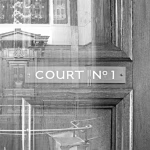Debt recovery can be a complicated and time-consuming process, especially when it comes to enforcing County Court Judgments (CCJs). However, for creditors looking to recover owed money, transferring a CCJ to the High Court for enforcement can be a powerful tool. Recent changes in enforcement rules and the increasingly proactive stance taken by courts and enforcement agents have made the High Court route more accessible. The introduction of additional enforcement measures in response to rising inflation, increasing business closures, and widespread economic uncertainty has emphasised the importance of effective debt recovery mechanisms.
When to Transfer a County Court Judgment to the High Court
A County Court Judgment is an order from the court requiring the debtor to pay the sum owed, but it does not directly result in the recovery of the debt. To enforce the judgment, creditors must take additional steps, such as applying for enforcement through a County Court Bailiff or High Court Enforcement Officer (HCEO). The decision to transfer a CCJ to the High Court should not be taken lightly, as it can involve additional costs and considerations. However, there are several key scenarios where such a transfer might be beneficial:
1. The Judgment Debt Exceeds £600
One of the primary reasons to transfer a CCJ to the High Court is when the value of the debt exceeds £600. This figure includes the original judgment sum as well as any court fees or additional costs. Once the debt reaches this threshold, the creditor may request a transfer to the High Court for enforcement. It is important to note that this threshold applies to the total amount owed, including interest and court fees, rather than just the principal sum.
2. Difficulty in Locating or Reaching the Debtor
Another key reason for transferring a CCJ to the High Court is if enforcement through the County Court is proving ineffective. For example, a creditor may have difficulty locating the debtor’s assets or even the debtor themselves. High Court Enforcement Officers have wider powers and more resources to pursue debtors across the country. Their scope of enforcement is more extensive, and they have the ability to take more direct action than County Court Bailiffs, such as seizing assets and carrying out more robust enforcement measures.
3. When County Court Enforcement is Not Producing Results
Sometimes, even after obtaining a CCJ, a creditor finds that enforcement through the County Court system is simply not working. The debtor may have hidden assets or may be avoiding compliance with the judgment altogether. In such cases, transferring to the High Court can be an effective way to escalate enforcement efforts. High Court Enforcement Officers have the power to seize goods without the same level of restrictions imposed on County Court Bailiffs, and they can take more forceful actions.
4. The Debtor is a Limited Company or Business
If the debtor is a limited company or another type of business, it may be more efficient to pursue enforcement via the High Court. HCEOs have a broader remit when it comes to enforcing against businesses, including the ability to seize goods or freeze bank accounts. In some instances, businesses may have substantial assets or cash flow, but may also be more difficult to deal with through standard County Court procedures.
5. Speed of Enforcement
The High Court route is often faster than County Court enforcement procedures. While transferring a CCJ to the High Court will typically involve a fee and some administrative work, the enforcement actions that follow are usually more rapid. This is particularly important for creditors who are facing financial pressures and need the funds quickly.
How to Transfer a County Court Judgment to the High Court for Enforcement
Once the decision is made to transfer the CCJ to the High Court, the creditor must follow a specific legal process. This process involves submitting a request to the court for the transfer and ensuring that all necessary paperwork is in place.
1. Requesting the Transfer
To begin the process of transferring a CCJ to the High Court, the creditor must complete the appropriate forms and submit them to the relevant County Court. The most common form used for this purpose is the N293A form, which is specifically designed for transferring judgments to the High Court for enforcement. This form can be obtained from the court or downloaded online.
The creditor will need to pay a fee for the transfer, which varies depending on the sum involved. For debts over £600, the transfer fee is typically around £66. It is important to keep in mind that the fee is non-refundable, even if the debtor is unable to pay the debt.
2. Obtaining High Court Enforcement
Once the transfer request is approved, the creditor must then instruct a High Court Enforcement Officer to carry out the enforcement. High Court Enforcement Officers are licensed professionals authorised to execute judgments and recover debts. They can use various enforcement measures, including:
- Warrant of Control: A court order allowing the HCEO to seize the debtor’s assets to cover the outstanding debt.
- Taking Control of Goods: HCEOs have the authority to take control of goods and either sell them at auction or recover the value of the goods to satisfy the debt.
- Third-Party Debt Orders: HCEOs can apply to the court to freeze the debtor’s bank accounts and recover funds directly from third parties, such as banks.
3. Enforcement Action by the High Court Enforcement Officer
Once the High Court Enforcement Officer has been instructed, they will typically visit the debtor’s premises or place of business to take control of goods or otherwise enforce the judgment. If the debtor has sufficient assets, the HCEO may be able to seize goods, vehicles, or property that can be sold to recover the debt.
The HCEO can also request an “order to attend and provide information” (form N316), compelling the debtor to attend a hearing and provide full financial disclosure. This can be useful if the debtor is attempting to conceal their assets.
4. Further Steps if Enforcement is Not Successful
If the High Court Enforcement Officer is unable to recover the debt, further enforcement actions may be taken. This can include:
- Charging Orders: These can be placed on the debtor’s property to secure the debt.
- Order for Sale: In extreme cases, a creditor may be able to apply for an order for sale, which allows the sale of property to satisfy the debt.
It is worth noting that these actions require additional court applications and fees, but they provide further avenues for recovery when other measures fail.
Conclusion
Transferring a County Court Judgment to the High Court for enforcement can significantly enhance a creditor’s chances of recovery, particularly when dealing with larger debts, uncooperative debtors, or complex cases. Recent trends suggest that enforcement measures are becoming more streamlined and aggressive, which can only work to the creditor’s advantage in securing repayment. However, it’s essential for creditors to weigh the costs and benefits carefully. Not all debts are suitable for transfer to the High Court, and creditors should consider factors such as the debtor’s financial situation, the value of the debt, and the likelihood of successful enforcement. In some cases, alternatives such as insolvency proceedings may be more effective. As the economy continues to struggle with inflationary pressures and business failures, the ability to utilise high-powered enforcement options could be the difference between recovering a debt and writing it off


